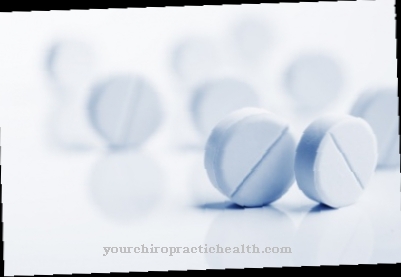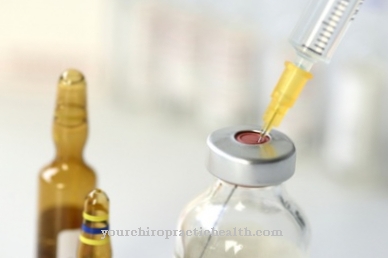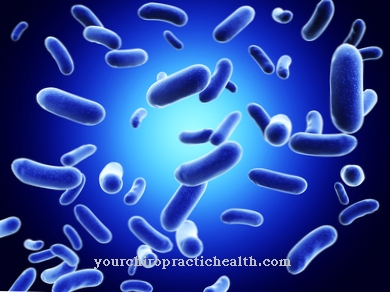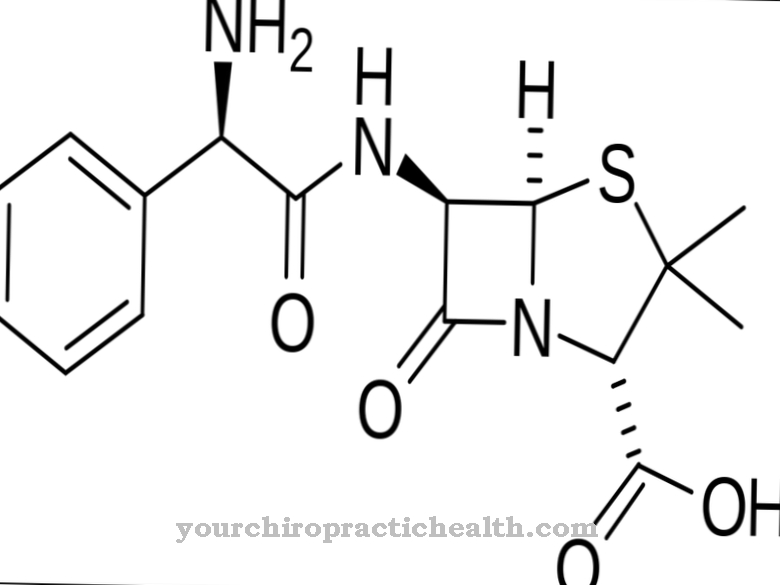Colchicine is the longest known active ingredient for the therapy of acute gout attacks. The strong spindle poison is obtained from the tubers and seeds of the autumn crocus.
What is colchicine?

As Colchicine is a toxic active ingredient from the group of tropolone alkaloids (naturally occurring compounds), which is mainly extracted from the seeds and tubers of the autumn crocus (Colchicum autumnale).
Colchicine is primarily used to prevent and treat acute gout attacks. The active ingredient has analgesic and anti-inflammatory properties by acting as a spindle poison in mitosis (cell nucleus division).
Colchicine itself is available as a bitter-tasting, yellow-whitish, amorphous or crystalline and water-soluble powder that turns dark when exposed to light. Colchicine is eliminated via the enterohepatic circulation (kidneys and bile).
Pharmacological effect
Colchicine has a pain-relieving and anti-inflammatory effect by preventing the inflammatory processes in the joints in the event of an acute gout attack and thus minimizing pain.
Here the active ingredient reduces the pain symptoms in an indirect way. In an acute attack of gout, there is an increased concentration of urate (uric acid crystals), which are phagocytosed (absorbed) by the macrophages (phagocytes) of the immune system. These phagocytes release inflammatory mediators (substances that promote inflammation), which cause the pain in the course of the attacks. Colchicine intervenes in this chain of effects by preventing the macrophages from taking up the uric acid crystals so that inflammation mediators are no longer released.
Unlike uricosuric drugs (promote uric acid excretion) or uricostatic drugs (inhibit uric acid formation), the active ingredient does not affect the concentration of uric acid in the blood. In addition, as a cell and spindle poison, colchicine affects mitosis (cell nucleus division) and inhibits the formation of microtubules, an important component of the cytoskeleton of eukaryotes, in the cells by binding to the protein tubulin (main component of microtubules) and thus the formation of the spindle fiber apparatus prevents.
Because of this toxic effect, the use of colchicine is associated with a number of side effects and is increasingly being reduced. For example, as a result of the mitosis inhibition by colchicine, the cell renewal of the epithelia of the small intestine can be impaired, which is why gastrointestinal complaints (diarrhea) can manifest. Accordingly, the lowest possible dosage should always be used in the context of colchicine therapy.
Medical application & use
Colchicine is primarily used for the therapy and prevention of acute gout attacks. In addition, other areas of application such as familial Mediterranean fever (recurrent polyserositis), Behçet's disease (chronic vasculitis) or recurrent pericarditis (pericardial inflammation) can be found in the literature.
Homeopathic preparations of the active ingredient can also be used for external therapy in the case of acute joint complaints in the context of inflammatory rheumatic diseases, joint effusions, gastrointestinal inflammations or tendinitis. Colchicine is usually administered orally in tablet form or as a solution. For the treatment of an acute gout attack, 1 mg is initially used in an adult and then 0.5 mg every 1 to 2 hours until the symptoms subside or until undesirable side effects manifest.
The daily dose should not be more than 4 to 6 mg. To prevent acute gout attacks, colchicine can be administered in low doses (maximum 1.5 mg per day), whereby the total duration of this prophylactic therapy should not last longer than three months.
In addition, a daily dose of 0.5 to 1.5 mg colchicine per day can prevent attacks of familial Mediterranean fever. The lethal dose for an adult is around 20 mg, with isolated deaths being observed even with lower colchicine amounts.
Risks & side effects
The most common unwanted side effects of a Colchicine Therapy are diarrhea (diarrhea), vomiting (vomiting), nausea and abdominal pain.
In addition, impairment of muscle function (including muscle weakness), kidney damage and skin complaints (pruritus, skin burning) can often be observed. In some cases, high doses lead to blood count changes, anemia, hair loss and / or impaired nail growth. Therapy with colchicine is contraindicated in the presence of hypersensitivity to the active substance, pregnancy, impaired liver and kidney function, diseases of the gastrointestinal tract, changes in the blood count and impairment of the cardiovascular system.
Since colchicine is metabolized (broken down) by the isoenzyme CYP3A4 and transported by the multidrug resistance protein 1 (MDR1 or P-gp), numerous relevant interactions with other drugs must be taken into account during therapy with the active substance. For example, parallel therapy with CYP3A4 (including ciclosporin, macrolides) or P-gp inhibitors (including ranolazine) can cause an increase in the plasma concentration as well as pronounced poisoning.













.jpg)

.jpg)
.jpg)











.jpg)